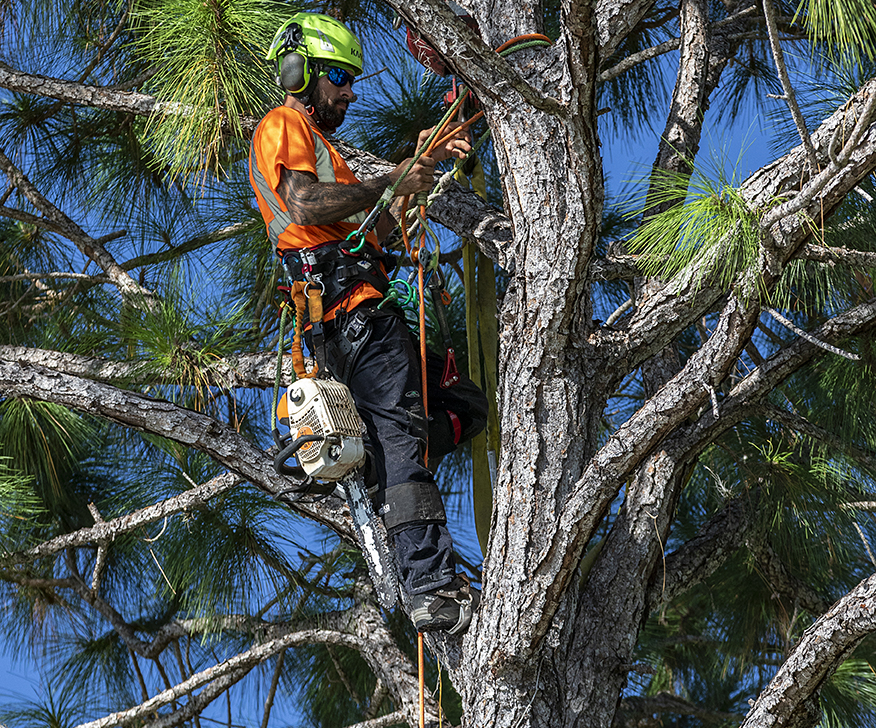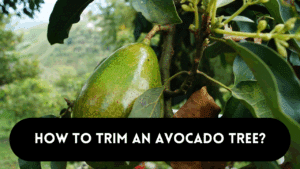People love Bradford Pear trees for their pretty flowers in the spring and their bright leaves in the fall. They do, however, need regular care to stay healthy and look good, just like any other tree. We will talk about how to trim a Bradford Pear tree in this complete guide. We will talk about everything you need to know to keep your tree healthy and make it look better. Let’s jump right in!
Why it’s Important to Trim Bradford Pear Tree?
There are several important reasons why you need to trim a Bradford Pear tree. First, cutting off dead or weak branches helps keep the tree’s structure strong. Second, it helps plants grow in a healthy way by letting air and sunlight into the canopy. Lastly, it makes the tree look better, which makes it a more appealing addition to your yard.
When to Trim a Bradford Pear Tree?
It is very important to know when to trim your Bradford Pear tree. Many times, late winter or early spring, before new growth starts, is the best time to trim these trees. This is the best time for trees to go dormant because it gives them the most rest and the least chance of getting a disease.
What You’ll Need
Get the tools you’ll need before you start trimming. Some of these are:
- Shears for pruning
- Cutters and loppers
- A hand saw
- Safety glasses
- Hands gloves
- Ladder (if you need it)
- For clean cuts, make sure your tools are sharp and well taken care of.
Prior to beginning the trimming process, please keep in mind that safety should always come first. To protect your eyes and hands, make sure you wear safety glasses and gloves. Make sure the ladder you’re using is stable and on level ground.
The Trimming Process in Three Steps
There are three steps to trimming a Bradford Pear tree:
Getting Rid of Dead or Diseased Branches: First, find any dead or diseased branches and cut them off. These branches can stop the tree from growing and make healthy parts sick. Cut the branch cleanly at the collar, which is the slightly raised spot where the branch connects to the trunk.
Thin Out the Canopy: To let more air flow and sunlight through, remove branches that are too close together or cross each other. Trim branches so that they only have a bud or lateral branch left. Do not leave any stumps.
Shaping the Tree: Finally, shape the tree to make it look good. Cut off any branches that are growing inwards or downwards and making the tree’s natural shape look bad. Take a step back every so often to look at the tree’s shape as a whole and make any necessary changes.
How to Trim a Bradford Pear Tree?
When you trim your Bradford Pear tree, remember these things:
Avoid Over-Pruning: If you prune a tree too much, it can get stressed out and grow too much new growth. As a general rule, you shouldn’t cut off more than twenty to twenty-five percent of the tree’s branches at a time.
Keep the Central Leader: If your Bradford Pear has a central leader, which is a single trunk that stands out, keep it. This will help keep the tree’s structure strong.
Don’t Top the Tree: Cutting off the tree’s main vertical stem, or “topping,” is bad for its health and looks. Stay away from this habit.
Follow the “Three Do’s”: When choosing which branches to cut off, the ones that are dead, damaged, or diseased should come first. These are the most important ones to get rid of.
How to Cut Like a Pro
Cutting the tree’s branches in the right way is important for its health and appearance. There are two main kinds of cuts:
Thinning Cuts: These cuts get rid of whole branches where they start, which is usually at the trunk or a bigger branch. Making thinning cuts helps the canopy breathe better by making it less dense.
Heading Cuts: These cuts take off a piece of a branch, usually at a bud or lateral branch. These cuts make new growth happen in the direction of the cut.
Having to Deal with Dunces
Dear Bradford People know that peers can make suckers, which are shoots that grow from the tree’s base or trunk. You should get rid of suckers because they can drain energy from the main tree. Just cut them off where they start.
Cutting back old Bradford pear trees
When you prune an old Bradford Pear tree, it may be harder because it is so big and tall. In this case, you might want to hire a professional arborist who knows how to trim trees safely and has the right tools. Safety should always come first, and only a professional can make sure the job is done right.
Care After the Trimming Bradford Pear Tree
There are a few more things you need to do after you’re done trimming your Bradford Pear tree:
Clean Up: To stop the spread of disease, get rid of all the pruned branches and other trash around the tree.
Mulch: Put a layer of mulch around the base of the tree to keep the soil moist and keep weeds from growing.
Watering: Give the tree as much water as it needs, especially when it’s dry, to keep it healthy and hydrated.
Watch the Tree Grow: Keep an eye on the tree’s growth to make sure the pruning is working well. Keep an eye out for any signs of illness or stress.
Common Problems and How to Fix Them
Even though Bradford Pear trees are pretty tough, they can still have some problems. Here are a few ideas:
Fire Blight: Your tree may have fire blight if you see dead branches, blackened leaves, or a “burned” look. Cut off and get rid of any branches that are infected, and think about using a copper-based fungicide.
Damage from a Storm: If your tree gets damaged by a storm, cut off any broken or hanging branches right away to keep the damage from getting worse.
Suckering: To keep the tree’s look, regularly cut off suckers that grow from the base and trunk.
Disease Prevention: To keep diseases at bay, make sure there is good air flow and don’t water from above, as this can help fungi grow.
FAQS
When is the best time to cut back a Bradford Pear tree?
When should you trim a Bradford Pear tree? In late winter or early spring, before new growth starts. This time of year when trees don’t grow leaves or buds makes them less stressed and less likely to get diseases.
How much of the tree can I cut back at once?
To keep the tree from getting stressed out from too much pruning, it’s best not to cut off more than 20 to 25 percent of its branches at once.
Can I trim my own Bradford Pear tree that is already grown?
Because it is so big, trimming a mature Bradford Pear tree can be hard. To be safe and make sure the job is done right, it’s best to hire a professional arborist.
What should I do with the branches and other things I cut off?
After trimming, clean up the area around the tree by getting rid of all the dead branches and other debris. This will stop the spread of disease and keep the yard clean.
What can I do to keep my Bradford Pear tree from getting sick?
To keep diseases away, make sure there is good airflow, don’t water from above, and get rid of any dead or sick branches right away. Disease can be avoided by pruning correctly and keeping an eye on things on a regular basis.
Conclusion
Pruning a Bradford Pear tree is a fun and important job that keeps it healthy and looking good. You can be sure that you are taking good care of your tree if you follow the steps and tips in this guide.
Remember that safety is the most important thing, and don’t be afraid to ask for help if you’re not sure how to prune. A Bradford Pear tree that is kept in good shape will continue to add beauty to your yard for years to come with its beautiful flowers and bright leaves. Have fun pruning!




